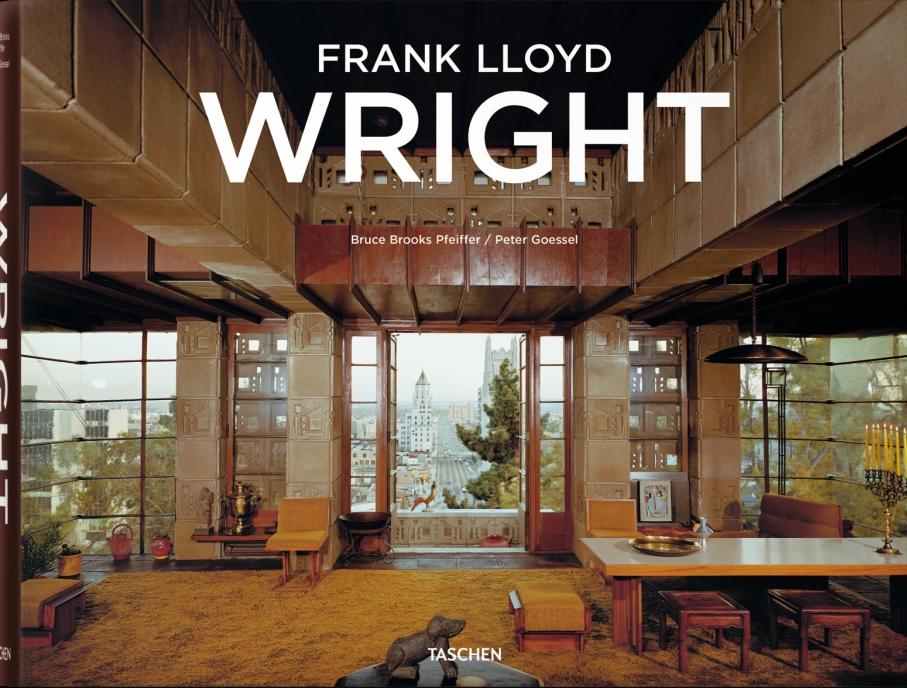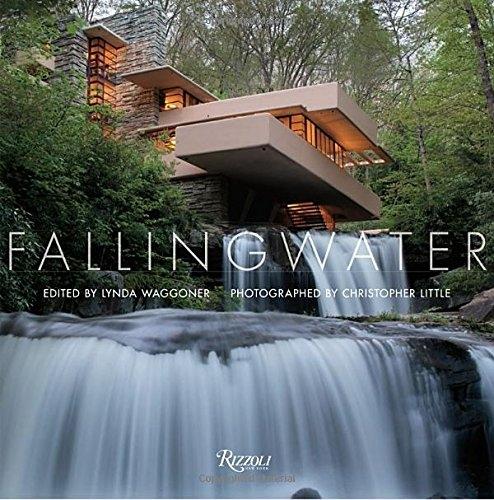Frank Lloyd Wright. Complete Works 1917-1942 Vol.2

The definitive publication on America’s greatest architect
Frank Lloyd Wright (1867-1959) is widely considered the greatest American architect of all time; his work ushered in the modern era and remains highly influential todayhalf a century after his death. TASCHEN’s three-volume monograph covers all his designs (numbering approximately 1100), realized and unrealized. Made in collaboration with the Frank Lloyd Wright Archives in Taliesin, Arizona, this collection leaves no stone unturned in examining and paying tribute to Wright’s astonishing life and work.
Volume Two starts with the years spent working in Japan, mainly on the Imperial Hotel, and followed by personal turmoil; in late 1922, Wright divorced from first wife Catherine, and the following year married Miriam Noel. Yet barely six months later she left, initiating a bitter divorce. Shortly after, Wright met his third wife, Olgivanna. During this difficult period a second fire at Taliesin strained his already parlous finances; the bank foreclosed, leaving him without home or studio. With nowhere to practice, he started writing magazine articles, and his autobiography (published in 1932 to great acclaim).
From 1917 through the Depression, up until 1942, though he designed continually, Wright saw many projects go unrealized, but nevertheless had the chance to build on new concepts and in new regions. His block building system led to idiosyncratic works like the famous Ennis house in Los Angeles, and in 1936 he completed the Herbert Jacobs house, using his new “Usonian” techniques, designed to be affordable for the middle-American family. The same year he moved to Arizona where, at the age of 71, Wright embraced his rugged new life in the desert, and with his students started building the Taliesin West complex. After receiving a gold medal from the Royal Institute of British Architects in London, he returned to see his Johnson Administration Building opened to great fanfare, nationwide publicity, and lines around the block waiting to tour inside.
Despite adversity, Wright emerged from this era with reputation restored and vitality renewedas manifested in Fallingwater and the Johnson buildingwhile his Usonian homes began to alter the way Americans lived.
About the editor:
Peter Gössel runs a practice for the design of museums and exhibitions. He is the editor of TASCHEN’s monographs on Julius Shulman, R. M. Schindler, John Lautner and Richard Neutra, as well as the editor of the Basic Architecture Series.
About the author:
Bruce Brooks Pfeiffer became Frank Lloyd Wrights apprentice at the Taliesin Fellowship in 1949. In 1957, he attended the Ecole Nationale des Beaux-Arts in Paris, returning in 1958 to continue his apprenticeship with Wright until his death in 1959. He remains at Taliesin to this day, as director of the Frank Lloyd Wright Archives, a vice-president of the Frank Lloyd Wright Foundation, and author of numerous publications on Wright’s life and work.
Out of stock
Out of stock





